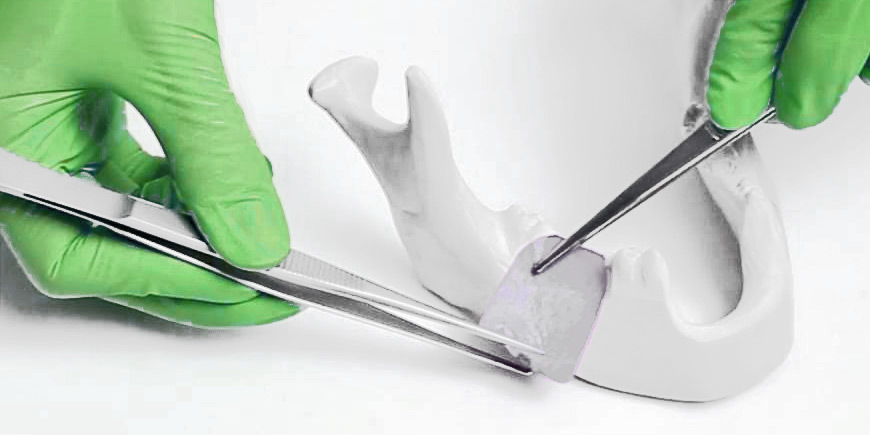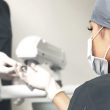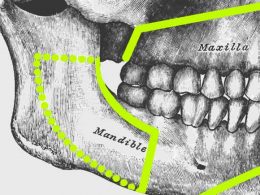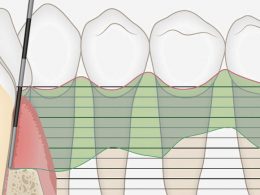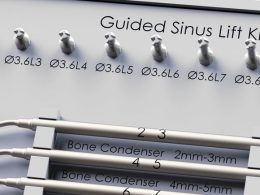Table of Contents
Guided tissue regeneration is a sophisticated therapeutic method that seeks to rebuild lost bone structures and gum tissue around the teeth. Patients who experience this type of degeneration commonly suffer from periodontitis, a disease that is generally associated with inadequate and/or insufficient oral hygiene techniques.
When a patient neglects to take care of his oral health for too long, tartar and plaque begin to accumulate on his teeth, and then they destroy their supporting tissues. If not treated on time, periodontal disease causes the union between the gum and the tooth to break, pathological pockets or sacs form, greater amounts of plaque, tartar and bacteria accumulate inside, and the alveolar bone is reabsorbed.
The eventual consequences of this phenomenon include: inflammation of the gums, serious infections, pain, bad breath, loss of alveolar bone, tooth mobility, teeth extraction, chewing difficulties and aesthetic compromise.
When Is Guided Tissue Regeneration Necessary?
Guided tissue regeneration will be indicated by your Periodontist when advanced periodontal disease has destroyed a significant enough amount of gum tissue or bone. Patients often develop this disease (periodontitis) because they have neglected basic oral hygiene habits, and above all, they underestimated the need and importance of periodic professional checkups and cleanings.
When this happens, patients often first develop gingivitis, which is a relatively mild and reversible inflammation of the gums, which turn deep red and bleed easily. If this stage is not resolved in a reasonable time, the infection can evolve, spread and become periodontitis. In this type of periodontal disease, the patient’s gums begin to separate from the teeth and pockets form around them, which promotes easier, faster and safer bacterial accumulation.
When the patient already has pathological sacs and periodontitis, the situation is serious because brushing will no longer be able to eliminate the bacteria that lodge inside his gums, and therefore, the disease will advance at will until completely destroying the bone that holds the teeth.
How Are the Regeneration Procedures?
The first step is for your specialist to apply local anesthesia to numb the area and proceed with the intervention. Next, infected gums will need to be thoroughly cleaned, removing all infected tissue and replacing it with healthy tissue. Gum grafts are usually taken from the mucosa of the palate, and are sutured in the affected area to renew the gum and promote the growth of new alveolar bone, through the placement of osteoinductive materials.
Usually, resorbable collagen membranes are placed under the gum, to act as a barrier, prevent the proliferation of fibrotic scar tissue and preserve the space for the formation of new bone tissue.
In the vast majority of cases, regeneration procedures are performed to gain bone around the teeth and also include the placement of osteoinductive substances around them.
What Is a Membrane?
A membrane is an artificial selective barrier that allows some things to pass through but completely stops others. They are used in oral surgery and periodontal surgery to prevent the epithelium, which regenerates relatively quickly, from growing towards the area where the growth of another type of slower-forming tissue is desired, such as bone tissue.
In the guided tissue regeneration procedure, the role of the barrier membrane is essential for proper bone regeneration. It can prevent soft tissue ingrowth into the bone defect and maintain space during the process of osteogenesis of the new bone.
The membranes are made from a wide variety of materials, both natural and synthetic, and are marketed under many trade names. The membranes used in periodontal regeneration treatments can be mainly of three types: non-resorbable, resorbable and collagen.
- Non-Resorbable Membranes They are the oldest, and although they are very good, we hardly use them anymore, since they require a second surgical intervention for their removal, once the bone defect has been corrected. They are made primarily of a polytetrafluoroethylene-based compound.
- Resorbable Membranes Resorbable membranes can be of animal origin or made from synthetic polymers. They are gradually hydrolyzed or degraded by enzymatic action, and therefore, do not require a second surgical stage for their removal. Compared to non-resorbable membranes, these barriers require less manipulation and surgical exposure, greatly reducing the chances of infection at the defect site.
- Collagen Membranes They are the most used today and the vast majority are obtained from human or animal cadaveric tissue. They are often cross-linked and take four to forty weeks to be reabsorbed, depending on the type used. Collagen absorbable barrier membranes do not require surgical removal, inhibit epithelial cell migration, promote the attachment of new connective tissue, are strongly antigenic and prevent blood loss by stimulating platelet aggregation phenomenon, leading to early formation of clots and stabilization of the wound.
Collagen membranes can also facilitate primary wound closure through the chemotactic properties of fibroblasts, even after being exposed. The use of these membranes has long provided highly predictable treatment results.
Lyophilized Bone
As we already mentioned, the final objective of these regenerative procedures is always the same: to achieve the formation of new bone at the alveolar level. For this, and in view of the difficulties and limitations in obtaining osteogenic material (bone from the patient himself with living cells), bone allografts of lyophilized bone and lyophilized demineralized bone from cadavers are often used; or more commonly, of bovine origin (xenograft).
These materials have been considered osteoinductive, that is, they have the ability to induce bone formation by stimulating the maturation of undifferentiated cells of the mesenchyme into preosteoblasts and osteoblasts; cells in charge of synthesizing the bone matrix.
Lyophilized bone is always placed as a filler in the periodontal defect, before and below the barrier membrane. Usually, the material is combined with the patient’s own platelet concentrates to enhance its inducing properties.
Platelet-Rich Plasma (PRP)
Platelets can play a crucial role in periodontal regeneration as they are reservoirs of growth factors and cytokines, key elements for bone regeneration and soft tissue maturation. Platelet-rich plasma (PRP) and platelet-rich fibrin (PRF) are not the same, although they are very similar, and are nothing more than platelet concentrates prepared from the patient’s own blood.
At DENTAL VIP we routinely use these concentrates for the treatment of periodontal intrabony defects, furcation lesions and sinus lift procedures.
How Does Guided Tissue Regeneration Help in Periodontitis?
This treatment increases the amount and height of the bone surrounding the tooth, which provides greater support and increases the amount of subjection around its root surface. Regaining even half the height of the lost bone, is generally enough to significantly extend the life of a tooth.
“Guided Tissue Regeneration Is Based on the Concept of Using a Membrane to Create and Protect a Space in Which Bone Can Form Without Interference From Soft Tissues”.
DENTAL TIP
Limitations of the Treatment
Currently available surgical techniques only allow bone grafting in some types of periodontal lesions and, often, only partially. The only defects in which the scientific literature has demonstrated the effectiveness of grafts are vertical lesions (circumscribed defects of 1, 2 or 3 walls) and those of furcation in lower molars.
Unfortunately, regenerative procedures fail when trying to treat horizontal lesions (the most common in periodontal disease) or any furcation defect in upper molars.
On the contrary, bone grafts are extremely effective in increasing the quantity and quality of bone in the recipient bed as a procedure prior to the placement of dental implants.
The Smile of Your Dreams Awaits You in Venezuela!
A cost saving alternative to your local dental care.
DENTAL VIP offers dental services in Caracas to patients from North America, Europe and the Caribbean.
We designed all our services to meet the special needs and expectations of our guests travelling for treatment:
- 50-70% lower prices.
- Volume discounts.
- Free consultation (X-ray, dental quote and transport).
- Extended guarantee packages for all treatments.
- Shorter treatment times and no waiting list.
- Free all time patient support.
- Travel and hotel assistance.
- After-care services.
We wish to ensure that your visit not only saves you money but you receive the best care for your dental needs. DENTAL VIP is dedicated to provide value for your money in your dental treatment, travel, and stay in Caracas.
Do not compromise on quality for the price, visit us in Caracas for your treatment and allow yourself the best. Do not settle for awkward removable dentures, low-end dental implants, or only temporary solutions.
Do not waste any more time, contact us right now!






